Candles have long been a comfort in our homes and a signal of community in our windows. They are all about light and symbolism, so it’s no wonder Ireland’s candle-makers are experiencing a boom through this time of pandemic.
The Danes are noted for their love of candles, burning more of them per person (about 6kg a year) than in any other country in Europe, says the European Candle Association. It's all part of having a nice hyggelig time with friends and family.
Statistics for candle usage in Ireland are less defined, but they have burned throughout our history. In 1616 the Candlelight Law passed in Dublin required every fifth house to display a candle to light the way for passersby. In the last century, folklorists recorded that Christmas Eve in rural Ireland meant a long thick candle placed in the hole of a scooped-out turnip, lit by the child of the house. On a Saturday in April of this pandemic year, President Michael D Higgins asked Irish households to shine a light from their window "as a gesture of shared solidarity, and hope in a time of darkness".
Once our light, candles are now sources of therapy, comfort and communication. The next generation of makers is taking the craft in new directions.
“People’s homes have become their sanctuary. We are all looking for comfort and self-care and a candle is a really accessible way of doing that,” says Co Down-based candle maker, Alix Mulholland. “Little rituals are comforting in an incredibly chaotic and unpredictable world, and we are seeing that playing out in our sales.”
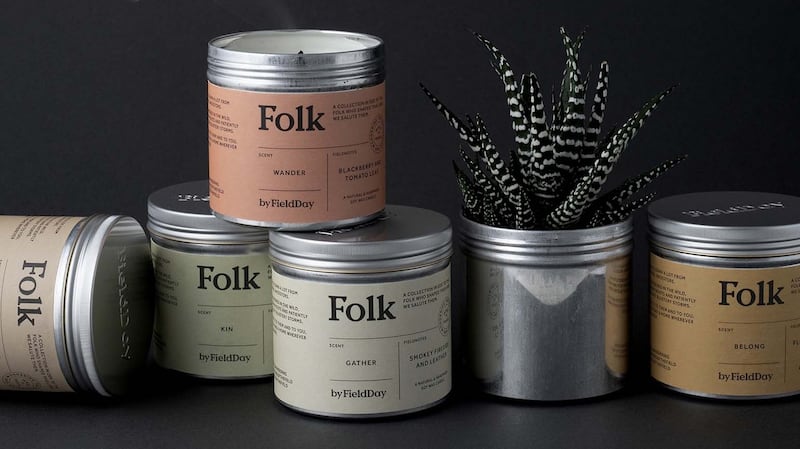
Mulholland founded Field Day Ireland at her kitchen table some 18 years ago. Indeed, though the relatively low barriers to entry mean it can be easy to get started, in an increasingly crowded and competitive market, makers need to be doing something different to succeed.
Her candles capture the unsung scents of Ireland. “I’ve always really enjoyed celebrating those weedy wildflowers, those really indigenous plants that grow in every field in Ireland. They are the backdrop to our lives, part of the fabric and the DNA of nature here.”
Closer to home
This back-to-nature simplicity chimes with a zeitgeist that sees us all rediscovering the wonder in things closer to home. Her candles have names such as Nettle & Mint, Buttercup, Moss as well as Peat, Hay, Lichen and Ivy. “You’ll never get me doing a ‘Pomegranate Noir’ because it doesn’t feel Irish. I like celebrating the things other people don’t notice so much.”
Consumers are more demanding of green and clean products too. Her candles are vegan, cruelty-free and from sustainable sources. “We’ve always been doing that, but about two years ago, a lot of customers were starting to ask questions. We needed to dial up our messages on packs to make it really obvious that this is what we stand for.” Her candles are made from vegetable wax, no ingredients are tested on animals, and packaging is either recyclable or from sustainable sources. “It’s really about making sure your supply chain all the way back can be certified.”
It’s been slow and organic growth for her business, which has wended its way around the birth of her children. The pandemic has meant juggling candle-making with home-schooling. Offering a gift-messaging service with online orders throughout lockdown has been “really heart-warming”, Mulholland says.
“Every day, we were writing these really lovely messages where people were using our candles as a way to show their love to somebody.”
If you want something different to the usual cinnamon-scented Christmas candle, she recommends Field Day Ireland’s Fir candle (€19.95), which she describes as “Freshly chopped fir, herbal balsam, and outdoorsy.”
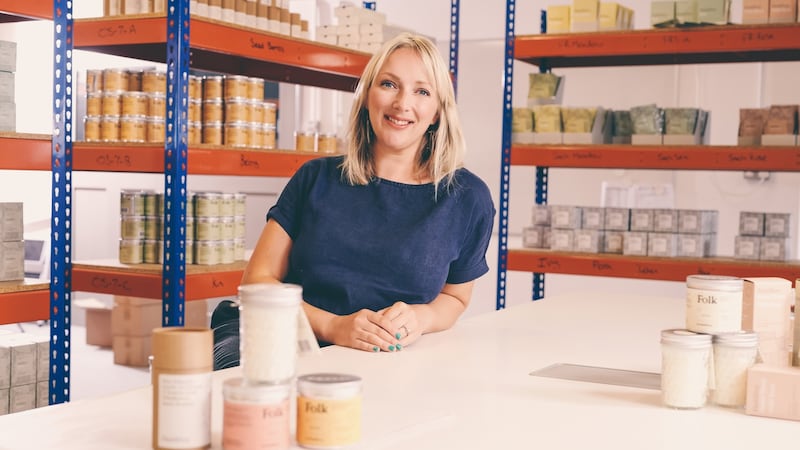
Dundalk-based candle company Soilse is experiencing unprecedented demand. Its Instagram page tells a tale of all-hands-on deck endeavour as a small team works day and night to fulfil Christmas orders for candles, with names such as Whiskey, Strand and Soft Day. Its Turf candle – "with top notes of bergamot, sitting above eucalyptus and on a base of red cedar" – has sold out.
"People are spending more time at home and they want to make it comforting," says founder Karen Lavelle. "When you light a candle, that flicker of light can definitely make a house a home." A graduate of fashion at the National College of Art and Design, Lavelle emigrated to New York, working for Donna Karan and GAP. "Fashion was always my love, but once I had babies it became difficult to travel and I just wanted to break away from mass-produced products."
Moving home to Dundalk, in 2008 she started making candles at her kitchen table while at home with her children. With support from her Local Enterprise Office, Soilse now operates out of Dundalk innovation hub Creative Spark.
Memory and place
Do her candles really smell of turf and whiskey? “They do, but what they really capture is memory and place. Turf for me captures the memory of Connemara. To create these, I work on blending fragrances – it’s a lot of trial and error. I enjoy making interesting fragrances.”
Indeed, innovative and interesting appears to be the way forward for the Irish candle sector. A report by analyst IBISWorld in October found that revenue in the US candle-making industry had fallen in the five years to 2020. Candle-makers providing high-end products in niche markets will likely be able to differentiate their products and command premium selling prices, however, it predicts. “Makers focusing on niche products such as soy-based candles or recycled glass jars are reaching the increasingly environmentally conscious consumer,” the report says. And so it is with many new Irish makers.
While candles of old, and indeed some mass-produced candles of today, are made from the by-products of the petrochemical industry, Soilse uses soy wax. “Soy is just a beautiful soft, natural wax. Sustainability is important to me, and I have sourced a soy wax that is sustainable, in that they replant the soy. We don’t want to be depleting crops of anything.”
The closure of gift stores, “our number one supporter” says Lavelle, has meant dialling up the export of gift boxes to the US, as well as the introduction of a new subscription service.
“We had to pivot fast when everything happened. Subscription was a new idea for us. We have a loyal following, and they can sign up for six of 12 months. It’s nice for someone who really loves candles.” Those using the Soilse gifting service have given Lavelle a window into the heart of Ireland during lockdown.
“We had the mostly lovely time writing the notes sent with our candles – everything from ‘Sorry your wedding didn’t happen this weekend, it will happen next year, here’s a treat for you’, to a mother sending her four daughters candles because she couldn’t see them. People can reach out by sending something, and people have really responded to sending something that’s Irish.”
When the pandemic is over, she hopes to resume candle-making workshops too. “A few years ago, I became interested in a holistic approach to the company. We like to think of our studio as more than just selling candles. We like to share the making, and we are doing some classes when we reopen with different groups including a group from a direct provision centre.”
Her recommendation for Christmas is the company’s Christmas candle (€18.50), “reminiscent of the days of Christmas in an Irish country house with the aromas of spicy and fruity baking wafting from the kitchen.”
“We have sent tonnes of those out to Australia and America. People are realising they are not coming home. It’s a nice way to send the scent of Ireland to the people who can’t be with us this Christmas.”
Of course Ireland isn’t just about the countryside; there are cities too. D8CandleCo, founded this summer by Lydia Ging in her Dublin 8 home, taps into a more urban vibe. An accountant by trade, Ging says she has always been creative, “getting my hands dirty on the weekends”.
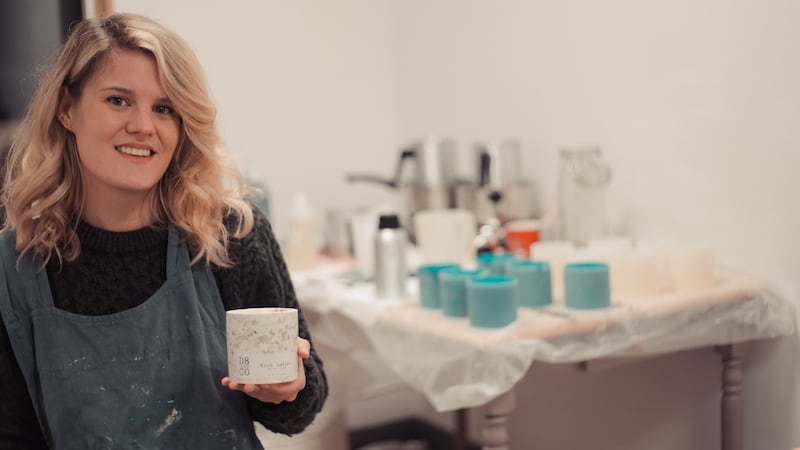
She attended a candle-making workshop in February on a whim, and bought a candle-making kit during lockdown to pass the time. An Instagram account followed, and then a website. “I was just randomly selling them and it grew in popularity as word spread.” Now she is stocked in three retail outlets and sells online too, with new stock released on Thursday afternoons.
Her first candle was titled Rich Ladies (€25). “A friend I worked with used to always comment on people’s perfumes: ‘Oh you smell like a rich lady’. I always loved that phrase, and that’s where the name comes from.” The scent is described as smelling of “lime, basil and money”.
Another candle, Young Rebel, smells “like sandalwood, musky with undertones of leather”. “Most of the fragrances I use are kind of masculine and I think women as well are kind of drawn to masculine smells. They are definitely the more popular ones, especially this time of year.”
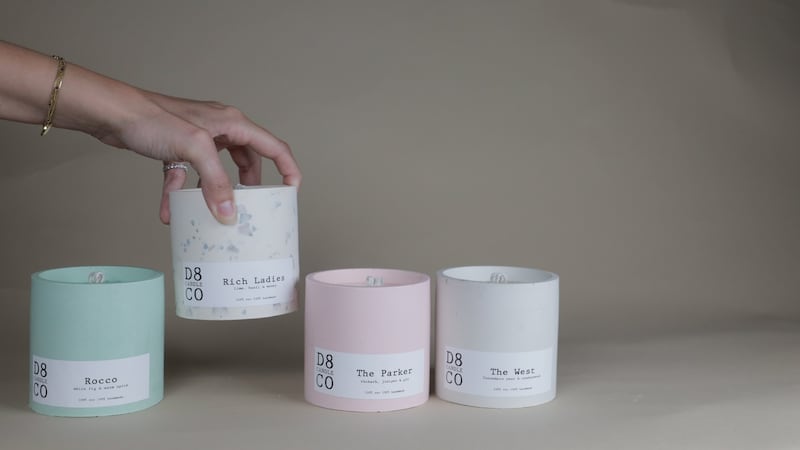
Hint of Scrooge
Her favourite for Christmas will be Ebeneezer, named after a Dublin 8 terrace but with a hint of Scrooge. “It smells of festive mulled cider with warm cinnamon spice . . . the perfect accompaniment to a cold winter night.”
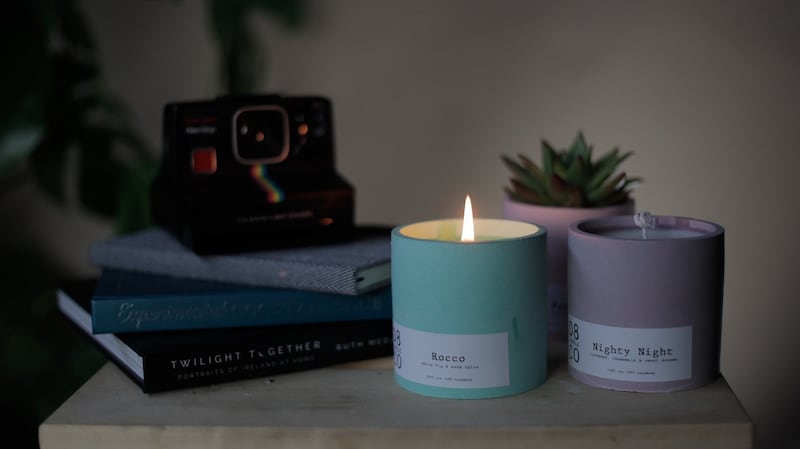
Ging’s candles are hand poured, using soy wax. She also hand casts their vessels for which next year she hopes to sell candle refills. They can also be repurposed as plant pots. “I enjoy coming up with new designs for the pots, I like how they look. My favourite part is the alchemy of mixing new fragrances and coming up with new smells that I haven’t smelled before.”
D8CandleCo isn’t the first candle maker to come from the district – not by a long way. That accolade goes to Rathbornes, founded on Winetavern Street. “We’re the world’s oldest candle company, established in 1488. We are Ireland’s oldest business,” says Siobhan Kehoe, commercial director with the company.
Candles have almost entirely lost their function as a source of light, but that’s how it started for Rathbornes. From the 1630s, the company supplied Dublin with candlelight for its streets and lighthouses. Wax back then was from animal tallow, and later from whales.
“We’ve been through a lot of challenges in 530 years – the Famine, world wars when we couldn’t get wax, the invention of electricity – each time we had to reinvent ourselves,” says Kehoe. “Church candles were our mainstay, but that is not such a growing market now. Candle-making has become very much more scented, and that market has just exploded in the past 20 years.”
In 2015, the company launched its Beyond the Pale range, now stocked in 64 department stores in Japan. Dublin Dusk (€54), a black candle smelling of “smoked oud and aged cedar”, is the latest addition to the range. Consumers are looking for design, fragrance and something that is Irish, says Kehoe.
They also want sustainability. Rathbornes has just launched its new Botanical Bee collection, hand-poured with natural fragrance oils. “Everything is 100 per cent natural, from wax to fragrance. It’s made from beeswax, rapeseed and coconut wax all mixed together to make a wax that burns cleanly and for a long time” says Kehoe. The packaging is 100 per cent recyclable. The Jasmine and Petitgrain candle (€40), promoting restful sleep, is the most popular scent.
While function and composition of candles may have changed over time, Irish candle-makers, new and old, are keeping our love affair with candles burning brightly.











